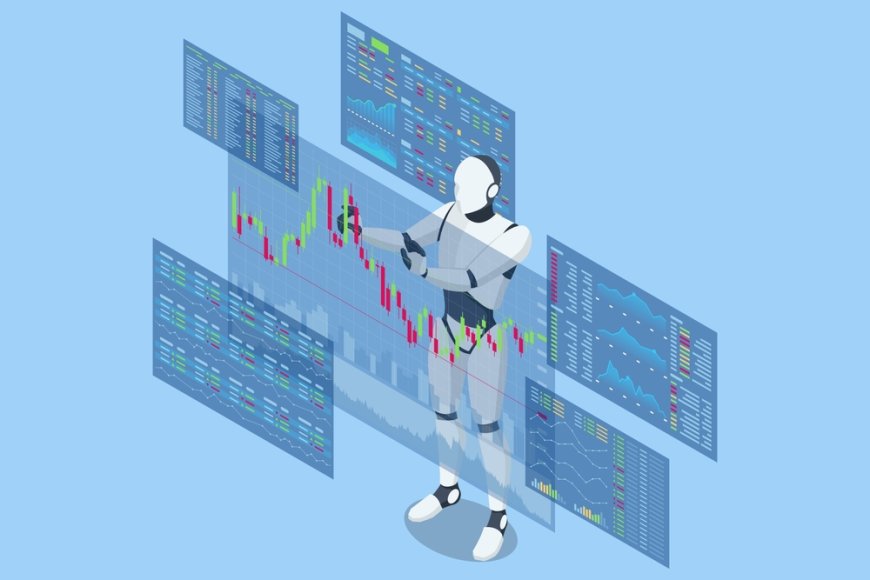Algorithmic Trading: Pros and Cons for Retail Traders
Go through the guide to understand what is Algorithmic Trading, along with its advantages and disadvantages, so you can make informed decisions.

With today's high-speed financial markets, algorithmic trading, which was once restricted to institutional giants, is increasingly accessible for retail traders. Because of advanced technology, lower barriers to entry, and the emergence of user-friendly platforms, individual traders can now automate their strategies like hedge funds and banks.
Does that mean every retail trader will embrace algo trading? The response will depend on knowing its core strengths and limitations. Here is an algorithmic trading guide for the newbie and intermediate trader. A breakdown of the pros and cons follows to help one decide whether this approach fits one's trading style.
What Is Algorithmic Trading?
Algorithmic trading (or algo trading) is the use of computer programs and pre-programmed rules to make trades. The rules may be price-based, time-based, volume-based, technical indicator-based, or any combination of these. Many traders now consider algorithmic systems as part of the best trading analysis tool for efficient and accurate decision-making.
Instead of entering orders manually, the system keeps an eye on the market and carries out orders automatically when specific conditions are fulfilled. This means that trades can be made quicker and more effectively, often in milliseconds.
While institutions have been leveraging advanced algorithms for decades, the emergence of APIs, trading robots, and platforms such as MetaTrader, NinjaTrader, and TradingView have placed these tools in the hands of individual traders.
Advantages of Algorithmic Trading
1. Efficiency and Speed
Algorithms can carry out trades far quicker than any human being. That speed is particularly valuable in very volatile markets or trading short-term plays. A fraction-of-a-second delay can impact results, algo trading puts an end to that delay.
2. Emotion-Free Trading
One of the greatest advantages is that algorithms obey rules, not emotions. Traders, being human, tend to fall prey to emotional pitfalls such as fear, greed, or revenge trading. In algorithmic systems, decisions are carried out precisely as anticipated, which enhances consistency.
3. Backtesting Capabilities
Prior to actually deploying a strategy, the majority of platforms enable backtesting it with past data. This assists in understanding if the strategy is viable, optimising parameters, and approximating risk and reward, without endangering real money. A lot of traders utilize the optimal trading analysis tool for this step to be sure that the data is correct and that performance is guaranteed.
4. Multi-Asset & Multi-Market Trading
Algorithms can watch multiple assets and markets simultaneously, a task virtually impossible for a human. Whether trading forex, stocks, crypto, or commodities, an automated system can run many positions at once without getting tired or losing focus.
5. 24/7 Market Access
Especially in markets like crypto, which continually trade 24/7, algorithmic systems let you stay active while you sleep. This means you never miss opportunities because of time zones or personal obligations.
Drawbacks of Algorithmic Trading
1. Technical Complexity
Establishing a working and profitable trading algorithm involves a certain level of programming know-how or being able to proficiently utilize no-code platforms. Even when you have this, you need to know market logic so that you do not end up making defective systems. Newcomers may find this too steep.
2. Over-Optimisation Risks
When backtesting, its easy to curve fit your strategy to historical data, creating a system that looks great on paper but fails in real-time markets. This is a common pitfall among new algo traders and highlights the need to combine automation with solid trading logic.
3. Platform Dependence and Glitches
Even the most superior systems can malfunction because of platform glitches, internet loss of connectivity, or server latency. Something as simple as a code bug or an API problem can lead to unwanted trades, slippage, or even substantial losses. Monitoring constantly, even if it's automated, is a necessity.
4. Market Conditions Change
Algorithms are only as good as the logic behind them. What works in a trending market may fail in a range-bound one. Unless regularly updated, an algorithm can quickly become outdated. A reliable algorithmic trading guide will always emphasise the need for frequent strategy reviews.
5. Capital Requirements
Although most brokers permit retail traders to employ algorithmic systems, applying them effectively sometimes demands more money. For example, high-frequency strategies might only be profitable at large sizes. Additionally, VPS hosting, data feeds, and high-end platforms can contribute to your cost base.
Conclusion
Algorithmic trading offers retail traders a powerful way to level the playing field, bringing speed, consistency, and expanded reach to their trading. However, its not a shortcut to success. Understanding its risks, investing time in learning, and constantly adapting to changing market conditions are essential for long-term success.
Refer to an algorithmic trading guide when entering into this space and, of course, build, test, and optimise using the best trading analysis tool. The confluence of human insight and machine precision may very well define the future of successful retail traders across 2025 and beyond.

































